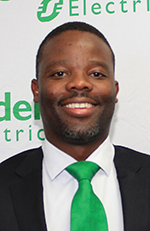

To listen to a symphony is one of the world’s great gifts. The culmination of instruments, diverse yet so beautiful when brought together by a competent conductor. That one individual that ensures rendition, cohesion and harmony.
A Distributed Energy Resource Management System (DERMS) is the conductor of the grid symphony that is made up of an extremely valuable yet varied mix of energy resources (read instruments) such as rooftop solar, battery storage, and traditional fossil-based energy.
A conductor must ensure that instruments play beautifully as a whole and are kind to the ear and uplifting to the spirit, yet shine in their individuality. The same can be said of a DERMS, which must effectively manage diverse energy sources to avoid compromising the grid’s integrity.
It’s not only energy resources, they also work in coordination with various other grid technologies such as outage management systems and scada systems. This integration is vital, especially at the distribution level, where a fully-fledged system is required to balance supply from distributed energy resources (DERs) such wind, solar PV and battery storage with the load demand.
The delicate load balance
The load profile of a power grid typically peaks in the morning, afternoon and evening. Here, the DERMS ensures that energy from DERs is used efficiently, avoiding wastage. For example, when the load is low, the DERMS can control the output from batteries and solar systems, preventing oversupply and overvoltage.
Looking closer at overvoltage, like its brownout sibling, it can cause damage to appliances and grid infrastructure. For example, household appliances are typically rated for 230 volts. If the grid experiences an overvoltage, pushing the supply to 300 volts, these appliances could be damaged. Similarly, grid infrastructure like transformers and switchgear, rated for specific voltages, can be damaged by overvoltage, leading to power outages.
A DERMS helps manage and mitigate these risks, ensuring the grid remains within safe operational limits. In addition to grid stability, it also plays a role in energy trading. Some countries are leveraging DERMS for real-time energy trading, allowing consumers to choose the type of power they consume. For instance, consumers can opt to use only green power during certain times of the day. This capability aligns with the concept of virtual power plants (VPPs), where a network of DERs forms a single grid that utilities can tap into during high demand or reserve for later use.
At Schneider Electric, our DERMS platform forms part of our EcoStruxure Advanced Distribution Management System (ADMS), which provides a comprehensive solution for managing and optimising DERs. EcoStruxure ADMS is an industry benchmark used by 75 utility companies that serve 70 million customers around the world.
One of the key advantages of our DERMS is its modularity. The platform can be integrated into existing utility enterprise systems, offering flexibility and scalability. This enables utilities to implement DERMS as part of a broader ADMS or as a standalone solution, depending on their specific needs.
| Tel: | +27 11 254 6400 |
| Email: | [email protected] |
| www: | www.se.com/za/en/ |
| Articles: | More information and articles about Schneider Electric South Africa |

© Technews Publishing (Pty) Ltd | All Rights Reserved